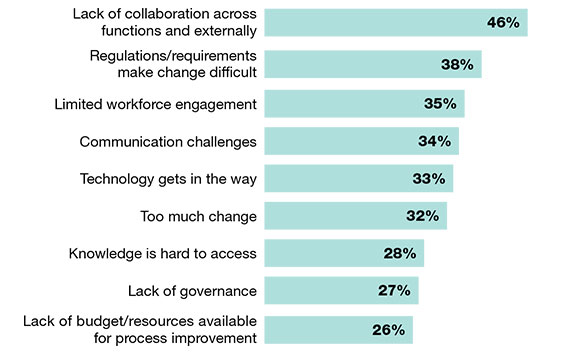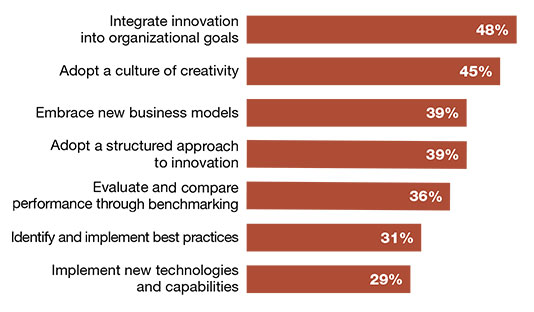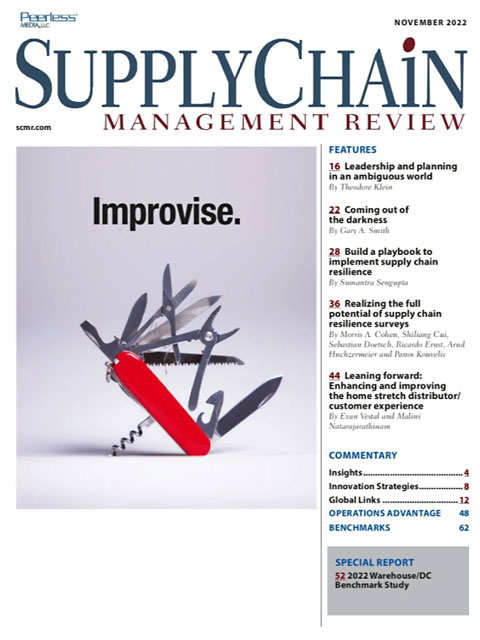Sorry, but your login has failed. Please recheck your login information and resubmit. If your subscription has expired, renew here.
November 2022
Are you resilient? It’s not an idle question. If there’s one word that I’ve heard at every supply chain event I’ve attended this year, its resilience. It is, of course, in response to the last few years in supply chain management. I think its fair to say that supply chains have been knocked to the canvas more times than Rocky. What has become clear as we do our post-pandemic reviews is that the firms that demonstrated the ability to get up off the canvas and keep punching were those that invested in resiliency before the pandemic—even if they didn’t use that term. Browse this issue archive.Need Help? Contact customer service 847-559-7581 More options
Over the course of 2022, supply chains have focused on rebuilding following the setbacks of the last two years. Leaders have often focused on process standardization, improved data management, benchmarking and identifying best practices. At the same time, supply chains have not been immune to the impacts of the “Great Resignation” and the worker-focused new normal at many companies.
One of the most important lessons of the last two years has been that supply chains can expect ongoing change. As a result, leaders are prioritizing collaboration and innovation across the supply chain. Supply chains must ensure that they are investing in their people to get ahead of employee engagement problems and stay resilient in the face of continued change.
Improving collaboration and making cultural changes frequently means developing and improving organizational culture. APQC has identified cultural influencers—roles within an organization that can make a significant contribution toward shaping or maintaining organizational culture—as well as actions that help drive successful supply chain culture change.
Check out the related Infographic from APQC.
Organization culture and subcultures
APQC defines organizational culture as the values, belief systems, leadership styles, collective unspoken assumptions, stories and rituals of an organization, as well as its character and orientation. It includes elements such as mission and value statements, history and behavioral norms that shape daily life within an organization. Organizational culture is explicit (i.e., stated through documents like values or mission statements) and implicit (communicated through more subtle cues such as the appearance of an office or workspace). Explicit and implicit culture both drive the employee experience in profound ways.
Organizational subcultures. Businesses must think of their organizations in more specific ways by also understanding their organizational subcultures. These are segments of the larger culture that have distinct cultural norms and values. Subcultures form when people working within the same team, department, business unit or functional role have common interpretations of the broader enterprise culture. What makes subcultures different from the broader enterprise culture is that they tend to have different working norms, terminology and understandings of how to carry out the organization’s mission and goals.
Figure 1: Barriers to improvement of supply chain processes

Source: APQC
The importance of culture. Organizational culture has the power to impact business performance both positively and negatively and also plays an important role in employee satisfaction and retention. The supply chain is not immune to workplace trends such as the Great Resignation and quiet quitting; an organization’s culture can motivate employees to either stay or look at moving to another company. An organization’s culture can also be detrimental to the business through unexpected behavior, disengaged employees, wasted resources and lost opportunities due to a lack of collaboration and cooperation among business units or across functions.
The need for cultural change
To combat the issues that have plagued supply chains over the last two years, organizations are looking to improve their processes as much as possible. As shown in Figure 1, organizations report a variety of barriers to improving their processes. Nearly half of organizations experience a lack of collaboration. More than one-third of organizations experience limited workforce engagement to the extent that it prevents supply chain improvement. Both of these issues stem directly from organizational culture.
A lack of collaboration has been a concern in supply chains for some time, but recent material shortages and logistics disruptions have made it more acute. Collaboration can enable supply chain professionals to find ways to overcome these issues, but only if it occurs faster and to a greater degree than it has been for many organizations. More importantly, organizations must ensure that they enable collaboration both among their staff and between their staff and external partners.
Workforce engagement is related to collaboration in that opportunities for staff to work together can foster greater engagement among employees. The pandemic and its related issues, as well as ongoing economic factors affecting workers, have led to decreased employee engagement across multiple industries. On top of this, the rise of hybrid and remote work has changed how employees interact with each other and their employers. Stronger collaboration and more open communication both within and across teams can help employees feel more connected to
the organization.
Innovation and cultural change
When asked about their top focus areas, 87% of supply chain organizations in APQC’s research indicated that innovation was one of the top areas. Within innovation, organizations are prioritizing several areas that require cultural change (Figure 2).
Integrating innovation into organizational goals means a shift in how the business operates and how it approaches success. Similarly, adopting a culture of creativity and embracing new business models require change in how an organization perceives itself and how staff interact across business units.
Figure 2: Innovation priorities within supply chain

Source: APQC
Shifting organizational culture requires a company to have a clear understanding of the nuances of how different teams work.
It also means organizations must be strategic about how to guide employees toward change.
By the very nature of the work, supply chains have employees working in different functions and often in different locations. Organizations rely heavily on technology to establish working connections between groups. This can make it hard for an organization to transmit organizational culture.
Cultural tools and challenges
APQC’s research finds that many organizations do not understand the roles within an organization that can help to shape culture. They also lack an understanding of common challenges in defining and maintaining organizational culture.
Organizations can enlist internal cultural influencers to drive culture change through both their actions and words. Cultural influencers inspire or guide the actions of others to adopt practices and values that are integral to an organization.
The most prominent of these cultural influencers are an organization’s leaders. More specifically, leaders can model desired behaviors to ensure that culture is created and reinforced at the top. They also communicate the importance of culture across the enterprise and support culture change initiatives. In many organizations, leaders can make or break the culture. Employees watch carefully to see if leaders are truly “walking the talk” when it comes to norms, values and expected behaviors.
Other roles within the organization also act as cultural influencers. For example, HR is a function that can make a significant impact on culture as it establishes policies that reinforce cultural expectations. In addition, longer tenured staff can drive culture because they serve as experts in the unstated rules on how work is done in the organization. Other support functions such as process management, knowledge management and transformation offices also shape culture as they facilitate changes to the ways business is done.
Actions taken by cultural influencers. After identifying the cultural influencers on their staff, organizations can identify actions to drive cultural change. Organizations can view these actions as being in three groups.
- Communication. Organizations should both convey elements of the culture such as mission and values, as well as enable two-way communications that help employees be heard.
- Human capital management practices. Driving culture starts with the hiring process, during which the organization looks for technical ability as well as cultural fit. Once employees join the organization, supervising managers and HR can reinforce messages and behavior through the onboarding process, employee promotions, rewards and employee engagement efforts.
- Company events and materials. Rituals such as annual events, celebrations, townhall conversations and regular business meetings all convey how work is done at an organization. Companies can also create new rituals to drive new goals and behaviors. Additionally, displaying artifacts such as old logos, marketing materials and uniforms can instill a sense of continuity for what the organization values.
Figure 3: Common challenges for organizational culture

Source: APQC
Although an organization can make a strong effort to shape culture through the actions of cultural influencers, it must still take steps to address potential challenges before they derail culture change.
Challenges to cultural change. Challenges to cultural change can come from many different directions. Approaches like gap analysis and cultural assessment tools like engagement surveys can help organizations to get a read on their current-state culture and pinpoint specific challenges before working to shift culture in new directions. Figure 3 shows some of the most common factors that can derail culture. These cover a number of areas within the organization and thus are the responsibility of different units within the business.
About APQC
APQC helps organizations work smarter, faster and with greater confidence. It is the world’s foremost authority in benchmarking, best practices, process and performance improvement, and knowledge management. APQC’s unique structure as a member-based nonprofit makes it a differentiator in the marketplace. APQC partners with more than 500 member organizations worldwide in all industries. With more than 40 years of experience, APQC remains the world’s leader in transforming organizations. Visit us at apqc.org and learn how you can make best practices your practices.
SC
MR
Sorry, but your login has failed. Please recheck your login information and resubmit. If your subscription has expired, renew here.
November 2022
Are you resilient? It’s not an idle question. If there’s one word that I’ve heard at every supply chain event I’ve attended this year, its resilience. It is, of course, in response to the last few years in… Browse this issue archive. Access your online digital edition. Download a PDF file of the November 2022 issue.Over the course of 2022, supply chains have focused on rebuilding following the setbacks of the last two years. Leaders have often focused on process standardization, improved data management, benchmarking and identifying best practices. At the same time, supply chains have not been immune to the impacts of the “Great Resignation” and the worker-focused new normal at many companies.
One of the most important lessons of the last two years has been that supply chains can expect ongoing change. As a result, leaders are prioritizing collaboration and innovation across the supply chain. Supply chains must ensure that they are investing in their people to get ahead of employee engagement problems and stay resilient in the face of continued change.
Improving collaboration and making cultural changes frequently means developing and improving organizational culture. APQC has identified cultural influencers—roles within an organization that can make a significant contribution toward shaping or maintaining organizational culture—as well as actions that help drive successful supply chain culture change.
Check out the related Infographic from APQC.
Organization culture and subcultures
APQC defines organizational culture as the values, belief systems, leadership styles, collective unspoken assumptions, stories and rituals of an organization, as well as its character and orientation. It includes elements such as mission and value statements, history and behavioral norms that shape daily life within an organization. Organizational culture is explicit (i.e., stated through documents like values or mission statements) and implicit (communicated through more subtle cues such as the appearance of an office or workspace). Explicit and implicit culture both drive the employee experience in profound ways.
Organizational subcultures. Businesses must think of their organizations in more specific ways by also understanding their organizational subcultures. These are segments of the larger culture that have distinct cultural norms and values. Subcultures form when people working within the same team, department, business unit or functional role have common interpretations of the broader enterprise culture. What makes subcultures different from the broader enterprise culture is that they tend to have different working norms, terminology and understandings of how to carry out the organization’s mission and goals.
Figure 1: Barriers to improvement of supply chain processes

Source: APQC
The importance of culture. Organizational culture has the power to impact business performance both positively and negatively and also plays an important role in employee satisfaction and retention. The supply chain is not immune to workplace trends such as the Great Resignation and quiet quitting; an organization’s culture can motivate employees to either stay or look at moving to another company. An organization’s culture can also be detrimental to the business through unexpected behavior, disengaged employees, wasted resources and lost opportunities due to a lack of collaboration and cooperation among business units or across functions.
The need for cultural change
To combat the issues that have plagued supply chains over the last two years, organizations are looking to improve their processes as much as possible. As shown in Figure 1, organizations report a variety of barriers to improving their processes. Nearly half of organizations experience a lack of collaboration. More than one-third of organizations experience limited workforce engagement to the extent that it prevents supply chain improvement. Both of these issues stem directly from organizational culture.
A lack of collaboration has been a concern in supply chains for some time, but recent material shortages and logistics disruptions have made it more acute. Collaboration can enable supply chain professionals to find ways to overcome these issues, but only if it occurs faster and to a greater degree than it has been for many organizations. More importantly, organizations must ensure that they enable collaboration both among their staff and between their staff and external partners.
Workforce engagement is related to collaboration in that opportunities for staff to work together can foster greater engagement among employees. The pandemic and its related issues, as well as ongoing economic factors affecting workers, have led to decreased employee engagement across multiple industries. On top of this, the rise of hybrid and remote work has changed how employees interact with each other and their employers. Stronger collaboration and more open communication both within and across teams can help employees feel more connected to
the organization.
Innovation and cultural change
When asked about their top focus areas, 87% of supply chain organizations in APQC’s research indicated that innovation was one of the top areas. Within innovation, organizations are prioritizing several areas that require cultural change (Figure 2).
Integrating innovation into organizational goals means a shift in how the business operates and how it approaches success. Similarly, adopting a culture of creativity and embracing new business models require change in how an organization perceives itself and how staff interact across business units.
Figure 2: Innovation priorities within supply chain

Source: APQC
Shifting organizational culture requires a company to have a clear understanding of the nuances of how different teams work.
It also means organizations must be strategic about how to guide employees toward change.
By the very nature of the work, supply chains have employees working in different functions and often in different locations. Organizations rely heavily on technology to establish working connections between groups. This can make it hard for an organization to transmit organizational culture.
Cultural tools and challenges
APQC’s research finds that many organizations do not understand the roles within an organization that can help to shape culture. They also lack an understanding of common challenges in defining and maintaining organizational culture.
Organizations can enlist internal cultural influencers to drive culture change through both their actions and words. Cultural influencers inspire or guide the actions of others to adopt practices and values that are integral to an organization.
The most prominent of these cultural influencers are an organization’s leaders. More specifically, leaders can model desired behaviors to ensure that culture is created and reinforced at the top. They also communicate the importance of culture across the enterprise and support culture change initiatives. In many organizations, leaders can make or break the culture. Employees watch carefully to see if leaders are truly “walking the talk” when it comes to norms, values and expected behaviors.
Other roles within the organization also act as cultural influencers. For example, HR is a function that can make a significant impact on culture as it establishes policies that reinforce cultural expectations. In addition, longer tenured staff can drive culture because they serve as experts in the unstated rules on how work is done in the organization. Other support functions such as process management, knowledge management and transformation offices also shape culture as they facilitate changes to the ways business is done.
Actions taken by cultural influencers. After identifying the cultural influencers on their staff, organizations can identify actions to drive cultural change. Organizations can view these actions as being in three groups.
- Communication. Organizations should both convey elements of the culture such as mission and values, as well as enable two-way communications that help employees be heard.
- Human capital management practices. Driving culture starts with the hiring process, during which the organization looks for technical ability as well as cultural fit. Once employees join the organization, supervising managers and HR can reinforce messages and behavior through the onboarding process, employee promotions, rewards and employee engagement efforts.
- Company events and materials. Rituals such as annual events, celebrations, townhall conversations and regular business meetings all convey how work is done at an organization. Companies can also create new rituals to drive new goals and behaviors. Additionally, displaying artifacts such as old logos, marketing materials and uniforms can instill a sense of continuity for what the organization values.
Figure 3: Common challenges for organizational culture

Source: APQC
Although an organization can make a strong effort to shape culture through the actions of cultural influencers, it must still take steps to address potential challenges before they derail culture change.
Challenges to cultural change. Challenges to cultural change can come from many different directions. Approaches like gap analysis and cultural assessment tools like engagement surveys can help organizations to get a read on their current-state culture and pinpoint specific challenges before working to shift culture in new directions. Figure 3 shows some of the most common factors that can derail culture. These cover a number of areas within the organization and thus are the responsibility of different units within the business.
About APQC
APQC helps organizations work smarter, faster and with greater confidence. It is the world’s foremost authority in benchmarking, best practices, process and performance improvement, and knowledge management. APQC’s unique structure as a member-based nonprofit makes it a differentiator in the marketplace. APQC partners with more than 500 member organizations worldwide in all industries. With more than 40 years of experience, APQC remains the world’s leader in transforming organizations. Visit us at apqc.org and learn how you can make best practices your practices.
SC
MR


Latest Supply Chain News
- Few executives believe their supply chains can respond quickly to disruptions
- Technology’s role in mending supply chain fragility after recent disruptions
- Tech investments bring revenue increases, survey finds
- Survey reveals strategies for addressing supply chain, logistics labor shortages
- Israel, Ukraine aid package to increase pressure on aerospace and defense supply chains
- More News
Latest Podcast

 Explore
Explore
Business Management News
- Few executives believe their supply chains can respond quickly to disruptions
- Technology’s role in mending supply chain fragility after recent disruptions
- Survey reveals strategies for addressing supply chain, logistics labor shortages
- How CPG brands can deliver on supplier diversity promises
- How S&OP provides the answer to in-demand products
- AI, virtual reality is bringing experiential learning into the modern age
- More Business Management
Latest Business Management Resources

Subscribe

Supply Chain Management Review delivers the best industry content.

Editors’ Picks






